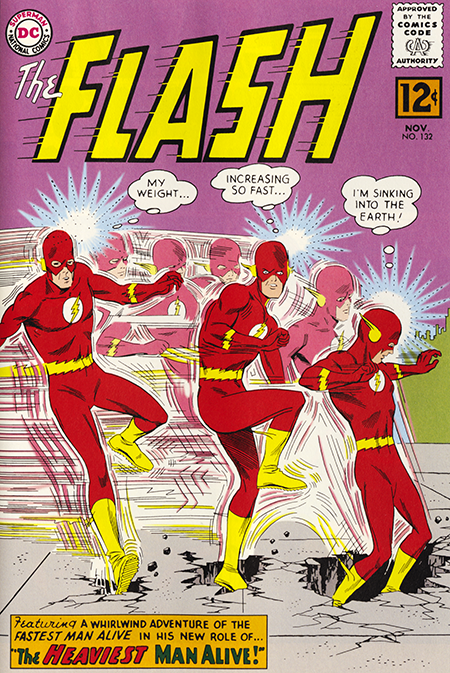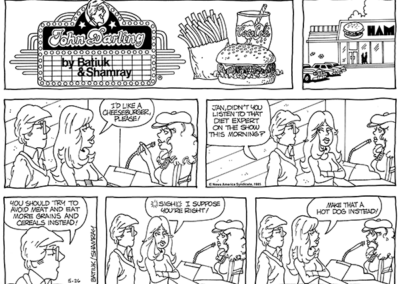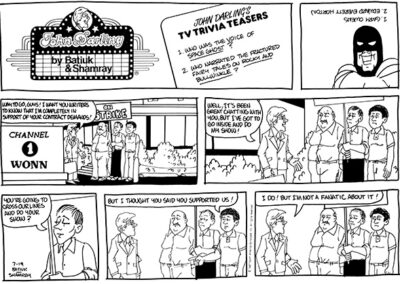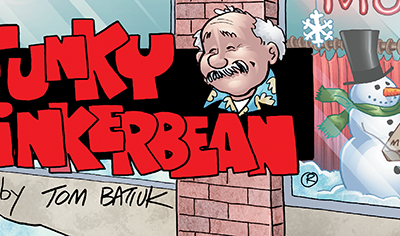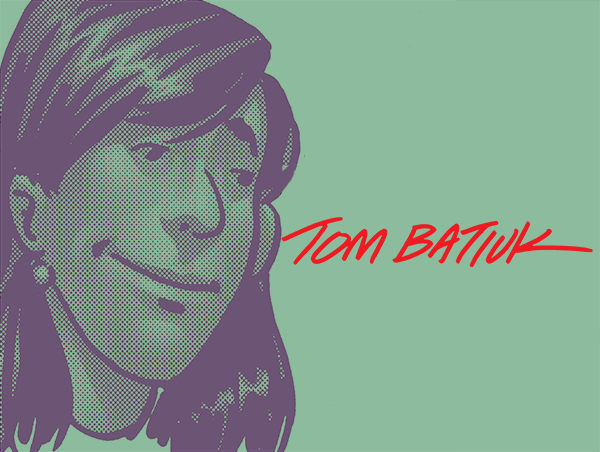The Flash #132 was a classic example of what constituted a great Sliver Age Flash book. For starters, the lead story revisits Gobdor the world first seen in The Flash #116 where the students there in the class of Teacher Elider are still using a device called a Tel-Vis to keep an eye on what’s happening on Earth. Dro Dorno, the chief executive of the company Tel-Vis has even taken things a step further by turning the Tel-Vis into a mass market entertainment empire Thrills of Earth. When they reach a bit of a dry spell as far as disasters are concerned, they trump some up that the Flash has to deal with. One of these faux disasters consists of turning high tension electrical towers into marauding monsters. The scene of those marching towers will always have a special significance for me. I told this story before in the intro to The Complete Funky Winkerbean Vol. One, but it probably bears repeating here now that we’ve bumped up against the story in which they appeared.
When we first moved from Akron, Ohio to points west (the great Elyria, Grafton North Eaton tri-cities area to be precise), we spent almost every weekend driving back to the old country to visit. It was a forced march of monumentally tedious proportions for yours truly and left me with copious amounts of time on my hands to exercise my imagination. On one particular ride home, we were traveling through the countryside when I saw these large electrical towers deployed across the countryside. I began to picture them taking on sentient life and starting to walk towards the city, and I imagined what people would have to do to deal with them. I didn’t think anymore about that until the current issue under discussion showed up in our mailbox and I saw that the writer John Broome had done exactly the same thing. It served to reinforce a growing suspicion in my mind that I might possibly be cut out to do this kind of work. Okay, so I’d gotten scooped on the electrical towers, but there was plenty more where that came from.
Meanwhile, back at the story, the piece ends with the Flash defeating the menaces, Dro Dorno on his way to prison and the Flash saying goodbye in the last panels to Teacher Elider. In the back-up story, we have the return of Daphne Dean, the movie actress who was in crush with Barry when the were young and then later as well when they meet again. The story is very much like her first appearance except that this time she’s in love with the Flash. It ends with her being disappointed in love just like the first go round, but it still manages to be a tender and touching story the kind of which just wasn’t the the norm for super hero comics. Nor, as I’ve previously noted, was the return of minor characters like Teacher Elider and Daphne Dean, a common occurrence for the comic books of the day. This all served to strengthen the verisimilitude of the Flash stories. This was something new, and it turns out I wasn’t alone in noticing it. In the Flash Grams letter column was a letter from a Melvin Herbers in Elyria of all places. In his letter referring to a previous issue, Melvin states: “The continuity of this story was remarkable if only for the sole reason that the ‘original’ Flash returned. Of course, the numerous references to past issues also helped to preserve the succession; Flash is becoming renowned for this.” Melvin won some artwork from that story for his letter. Even though we shared a mutual passion for this work and lived relatively close to each other, it somehow never occurred to me to get in touch with Melvin or him with me. Funny ol’ world this.


